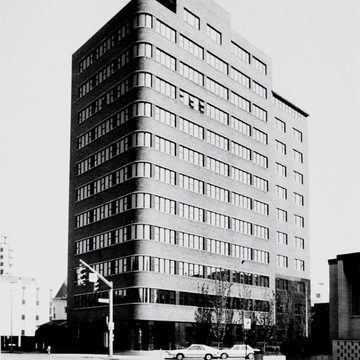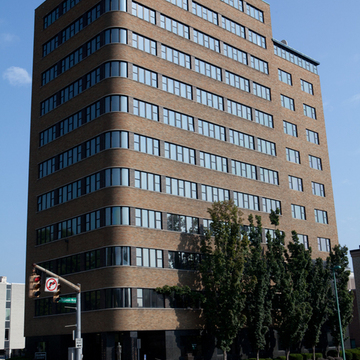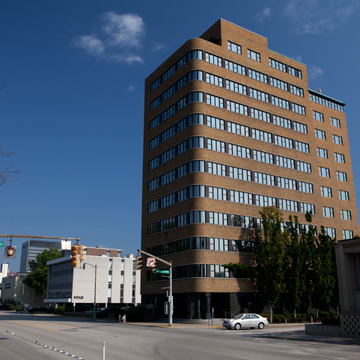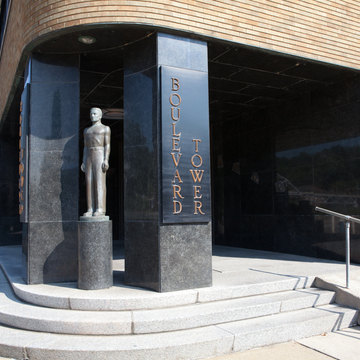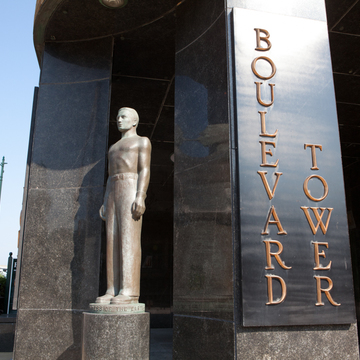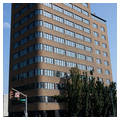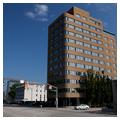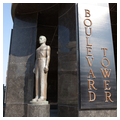You are here
Boulevard Tower (United Carbon Building)
West Virginia's most dazzling example of the International Style was built to house offices of one of the state's most important corporations. The nation's architectural press publicized the building, and the Charleston Gazette (October 17, 1941) captured its essence on opening day by terming it a “streamlined landmark of a greater Charleston.” The twelve-story tower embodies salient characteristics of its style in its rounded corner, ribbon windows, and materials, including glass brick. The building was envisioned as a sort of corporate billboard in its use of black and gold, the company's colors, for sheathing the steel skeleton. Polished black granite on the ground floor and dark Virginia alberene stone on the first three stories of the rear section contrast with gold-toned brick veneer above.
Before plans were finalized, Robert E. Martens, then a student at Michigan's Cranbrook Academy, prepared a model of the building. According to the West Virginia Review (October 1940), the younger Martens made the model “under the personal supervision of the famed Finnish architect, Mr. Eliel Saarinen, the president of the academy.” Saarinen's wife, Loja, created window hangings for the penthouse suite, and many original furnishings that Martens designed were constructed at
United Carbon manufactured carbon black, an essential reinforcing component of rubber tires, as well as a coloring agent for other products. Oscar Nelson (1879–1953), a native of Sweden, formed the company and inspired Robert Martens's bronze statue at the rounded corner entrance. Titled From the Fullness of the Earth, it represents, as described in the Charleston Daily Mail (October 17, 1941), “a workman, not definitely a laborer, nor a chemist, nor an office man … but … a man who by sweat and toil is taking the ingredients from the earth and processing them into useful finished products.” Nelson also commissioned the Martens firm for designs at his Greenbrier County estate, Morlunda ( GR18). His first love, however, was his work, and, in a manner of speaking, he is still at his office. His tombstone in South Charleston's Sunset Memorial Park ( KA17) is a granite model of this building.
Although the building is now under different management and no longer serves the corporation that built it, its exterior remains virtually unchanged.
Writing Credits
If SAH Archipedia has been useful to you, please consider supporting it.
SAH Archipedia tells the story of the United States through its buildings, landscapes, and cities. This freely available resource empowers the public with authoritative knowledge that deepens their understanding and appreciation of the built environment. But the Society of Architectural Historians, which created SAH Archipedia with University of Virginia Press, needs your support to maintain the high-caliber research, writing, photography, cartography, editing, design, and programming that make SAH Archipedia a trusted online resource available to all who value the history of place, heritage tourism, and learning.

